Read the information about fish, listen and learn some new words.
(Читай про риб, слухай і вчи нові слова!)
- Herring
Herring are small silvery fish with short fins and lots of shiny scales. Herring are small fish so are rarely found above 40cm long. They feed on small animals like krill and young crabs floating around in the water. Herring live in very large groups, called fish schools or shoals, at depths of up to 200m in cold water.
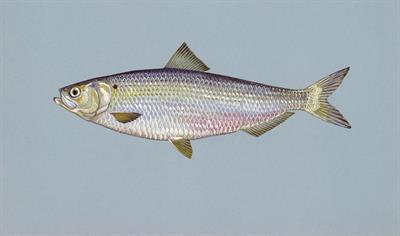
herring — [ˈher.ɪŋ] — оселедець
- Perch
Perch is a type of fish. It is typically less than 25 cm long. It has greenish basic colour with 5-9 black bands, and red fins. Perch lives in water which contains no salt or very little salt. It can be found in lakes, rivers, ponds and areas where sea water mixes with river water such as the Baltic Sea. Perch eats small animals in the water, such as insects, worms and small fish. It is most hungry early in the morning and late in the evening.
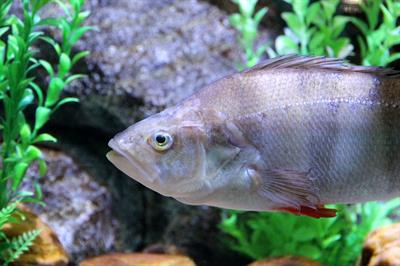
perch— [pɜːtʃ] — окунь
- Pike
Pike is a genus of fresh water fish. They are found in the northern parts of North America, Europe and Asia. Pikes are large predatory fish with a long cylindrical body. They have a green color (various shades) with yellow eyes. Pike share a forked tail fin and a large pointed head. Their dorsal and anal fins are located far back on their bodies. All species have very sharp teeth.
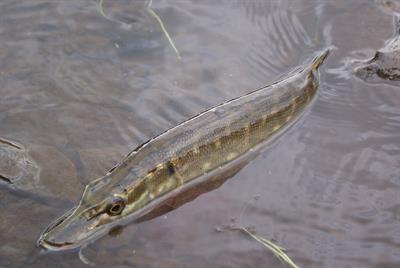
pike — [paɪk] — щука
- Plaice
Plaice are a brown oval-shaped flatfish with bright orange spots. Plaice are normally around 50cm long, but some have been found at 100cm long and weighing up to 7kg! Plaice mainly eat molluscs, which are shelled animals like clams, cockles and mussels. Plaice live on sandy seafloors in depths of up to 200m.
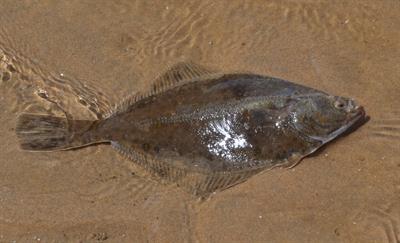
plaice — [pleɪs] — камбала
- Ray or Skate
Rays (Skates) are a type of cartilaginous fish –fishes with skeletons made of cartilage, rather than bone – that are characterized by flat bodies and wing-like pectoral fins attached to their heads. There are dozens of species of rays (skates). They live throughout the world, spending most of their time on the ocean bottom. They have strong teeth and jaws, allowing them to easily crush shells and feed on shellfish, worms, and crabs. The largest species reach up to 2.5 metres but the smallest are only 75 cm long.
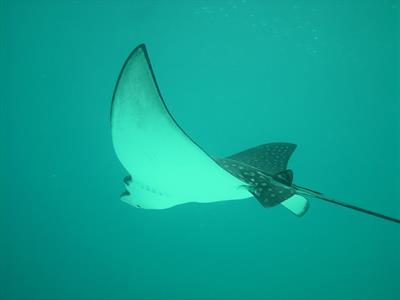
ray — [reɪ] — скат
skate — [skeɪt] — скат
cartilage — [ˈkɑː.təl.ɪdʒ] — хрящовий
- Salmon
Salmon are silver fish and have large round scales. Some types of salmon are bright red in colour. Salmon can grow up to 150cm. Salmon eat small fish including sprats and pilchards. Salmon can be found all over the world, often in cold waters. In the middle of the year, salmon leave the sea and move to the top of rivers to have their spawn, which will grow into adult salmon. The salmon sometimes need to jump over rocks on their way, and can jump to heights of up to 3.7m!
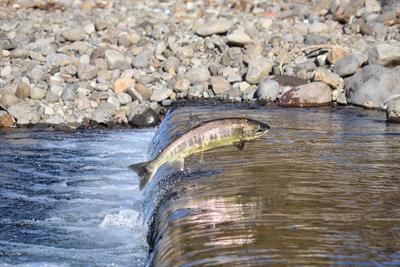
salmon — [ˈsæm.ən] — лосось
- Sawfish
The Sawfish are a family of rays which have a long body, like a shark. One feature that separates a sawfish from other rays is its long, saw-like snout. On either side of this rostrum are little teeth like a saw. Sawfish have a mouth, nostrils, and gill slits under their body, just like a ray. Also, their pectoral fins are enlarged, like those of a ray. Also like rays, when they settle on the bottom, they take in water through two spiracles just behind the eyes. This gets water for the gills, without sand. Several species can grow to about 7 metres. The sawfish's most distinctive feature is the saw-like rostrum. The rostrum is covered with motion- and electro-sensitive pores. These allow sawfish to detect movement and even heartbeats of prey hiding under the ocean floor. The rostrum serves as a digging tool to unearth buried crustaceans.
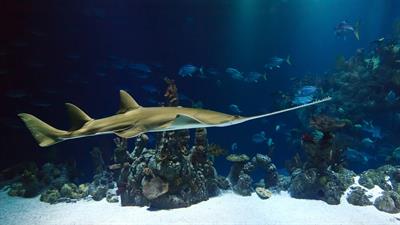
sawfish —[ˈsɔː.fɪʃ] — риба-пилка
Джерела:
https://fishandkids.msc.org/en/play/fishyfactfiles/herring
https://kids.kiddle.co/European_perch
https://fishandkids.msc.org/en/play/fishyfactfiles/plaice
https://www.thoughtco.com/skate-fish-profile-2291587
https://fishandkids.msc.org/en/play/fishyfactfiles/salmon
https://kids.kiddle.co/Sawfish
https://kids.kiddle.co/Esox
https://kids.britannica.com/kids/article/trout/390866